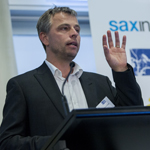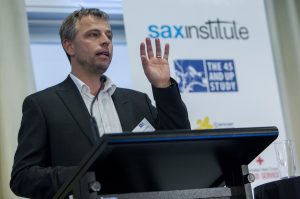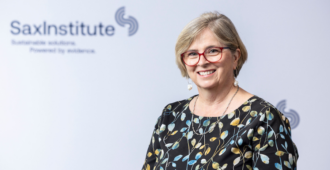

More than 1000 genomes of healthy elderly people have already been sequenced as part of a NSW government-funded program that includes the Sax Institute’s 45 and Up Study partnering with the Garvan Institute of Medical Research to develop Australia’s largest public database of genetic information.
Head of the Garvan Institute’s Kinghorn Centre for Clinical Genomics, Associate Professor Marcel Dinger, will give an update on the innovative Medical Genome Reference Bank (MGRB) at the 45 and Up Study Collaborators’ meeting in Sydney on 6 September.
The MGRB will contain genomic sequences from 4000–4500 individuals aged over 70 years, who are free of chronic diseases like cancer, cardiac and neurological diseases.
The database of healthy genomes will act as a powerful filter, to enable researchers to identify genetic variants linked to a wide range of diseases.
Blood samples from about 2000 participants in the 45 and Up Study are being sequenced, along with samples from participants in the ASPREE study (ASPirin in Reducing Events in the Elderly) at Monash University.
Associate Professor Dinger said the first 1000 blood samples submitted for the study have already been sequenced with more set to be provided in the coming year from both the 45 and Up Study and ASPREE cohorts.
An unparalleled resource
“The 45 and Up Study is an ideal resource for studying what the genome of healthy older people ‒ or the wellderly ‒ looks like,“ he said.
Once all the genomes had been sequenced, the MGRB would promote and encourage scientific discovery, with researchers able to access the data to investigate a wide range of questions.
“This biobank of samples from healthy individuals will be a resource that researchers can use to distinguish between causative variants of diseases,” Associate Professor Dinger said.
He said it was anticipated that the project, due to be completed in 2018, would not only broaden the range of diseases able to be diagnosed by whole genome sequencing, but would have immense research value where diagnoses were not immediately found.
“The data contained in the Medical Genome Reference Bank will be an unparalleled resource that will vastly improve our understanding of healthy ageing and catalyse genomics studies seeking to identify the genetic basis of rare, inherited and more common diseases such as heart disease, diabetes, cancer and developmental disorders,” he said.
The 45 and Up Study is managed by the Sax Institute in partnership with major partner Cancer Council NSW and partners: the National Heart Foundation of Australia (NSW Division); NSW Ministry of Health; NSW Government Family & Community Services – Carers, Ageing and Disability Inclusion; and the Australian Red Cross Blood Service.
Find out more
- Register now to attend the 45 and Up Study Collaborator’s 2016 Meeting.
- Find out more about the Medical Genome Reference Bank
- Find out more about the 45 and Up Study





